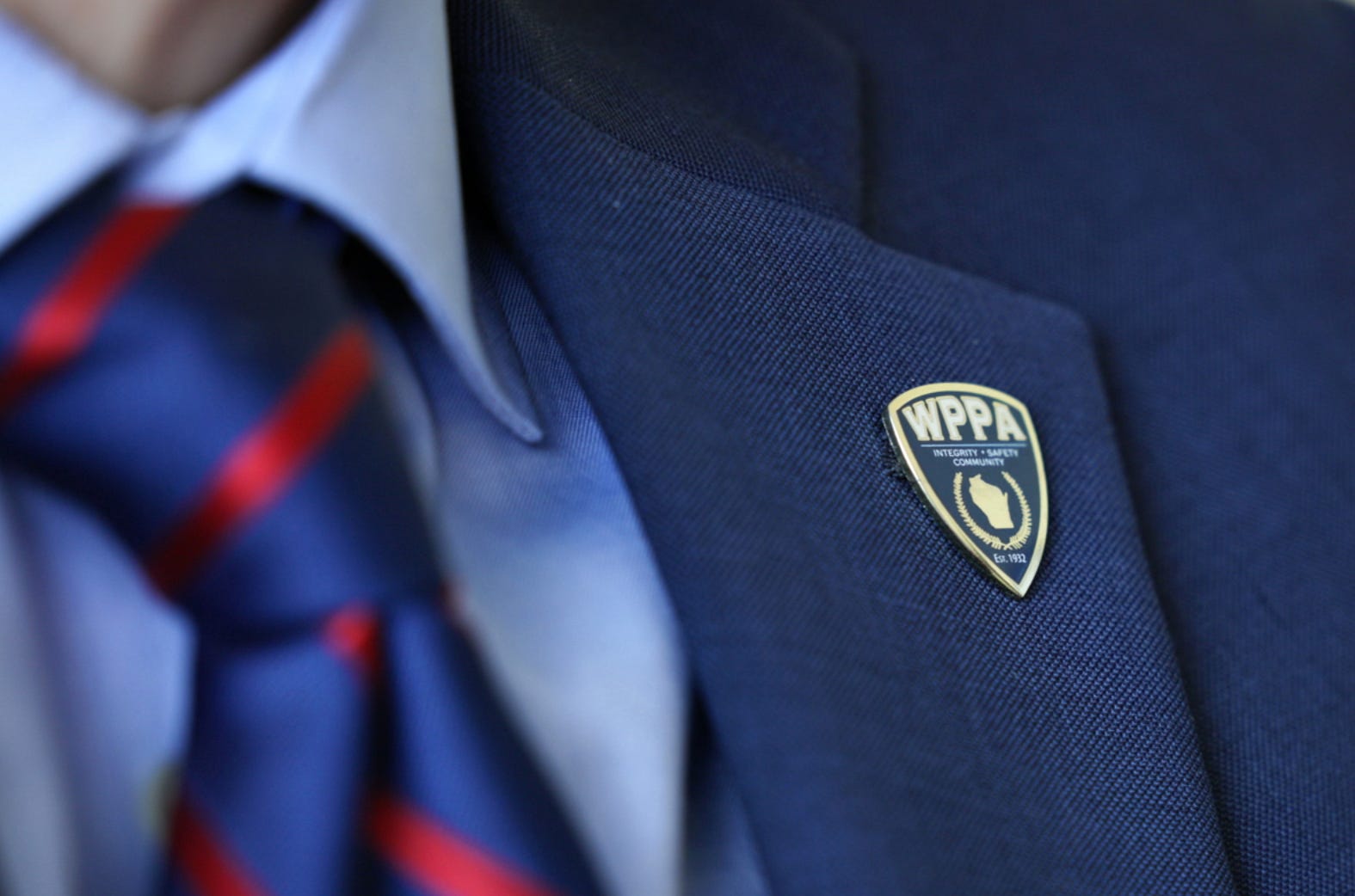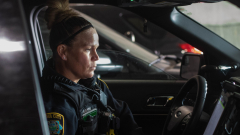James Brown Jr, Olivia Jennings and Layla Brown-Clark
| News21

PHOENIX – Police departments across the country are hemorrhaging officers faster than recruiters can find qualified applicants.
Seattle has lost more than a quarter of its police force in the past 2.5 years. The Fairfax County police chief in Virginia declared a personnel emergency on July 28, instituting mandatory overtime. Three small towns — Kenly, North Carolina, Melbourne Village, Florida, and Springfield, Colorado — experienced mass resignations this summer: The entire department in each community called it quits.
Advocates pushing for defunding or abolishment of police may see fewer officers as an encouraging sign. But some city officials said it affects the communities the police serve.
In Seattle, the mayor in July declared the department could no longer promptly and effectively provide essential services.
“This reality is contributing to exhaustion and low morale among officers, as the police department’s staffing crisis harms public safety,” according to the mayor’s comprehensive plan to retain and recruit new officers.
Recruiters face a myriad of challenges: the great resignation, COVID-19, a cultural divide between baby boomer leadership and Gen Z recruiting base.
Some experts also blame social media and news coverage of high-profile police shootings, in-custody deaths and violent interactions – all of which has led to a growing mistrust of law enforcement.
“Particularly after the George Floyd incident, there was a dramatic shift,” said Phil Keith, former director of the Office of Community Oriented Policing Services – known as the COPS Office, which is run by the Department of Justice. “The narrative in the national media was not a favorable one, police were painted with a real broad brush. We were villainized by many media outlets.”
In addition, more officers are retiring or leaving to pursue a different career. The resignation rate in 2020-21 increased 18% and the retirement rate rose 45%, according to a survey conducted last year by the Police Executive Research Forum.
MORE: News21’s ‘In Pursuit’ project
Some police departments aren’t doing much to change the dynamic in terms of who they hire, but others are trying harder to change the process and attract candidates who better reflect the communities they serve, with a concentrated effort on hiring more women, people of color and members of the LGBTQ+ community.
“I don’t think there’s a way to solve the recruiting crisis by sticking with the status quo,” said Maureen McGough, chief of strategic initiatives for the Policing Project at the New York University School of Law. “And so much of the recruiting crisis is the result of the status quo that I don’t think people are going to have a choice pretty soon.”
Officer Terry Cherry, a recruiter for the Charleston Police Department said exits aren’t always bad, especially because police culture typically resists change.
“Sometimes that leaving an organization makes way for new ideas and different types of thinking,” she said. “So you have these new people coming in, they’re excited. They’re excited because they’ve seen the world. They know about Ferguson. They know about George Floyd. They know about body cameras.”
And they’re ready to fight for what they believe in to change and innovate, Cherry said, adding that she’d rather see her department short staffed than filled with officers who harm the profession.
‘Very few of them are innovating’
At a recent recruiting event in Fort Worth, Texas, about 50 potential recruits came to speak with representatives from 14 law enforcement agencies across the state, including Arlington, Dallas and Houston.
Some recruiters stood for hours but only spoke to a few possible applicants.
Sgt. Jaime Ramos, recruiter for Houston police, noted that many interested applicants get “teed out” – disqualified – because of drug use, tattoos or social media behavior.
Bryan Graham attended the event for Arlington in a role recently created to help address recruiting challenges.
“Several years ago, they would say, ‘This is the number of seats for this (police) academy.’ And you had it, you know, you filled it every time,” Graham said. “In the last two years, we haven’t filled the class.”
The Arlington department created a new recruiting initiative, called Choose to Be APD, along with Graham’s new position. After 22 years on the force, Graham swapped SWAT for selling a career in law enforcement.
“There hasn’t been much of a recruiting budget over the last few years,” Graham said.
President Joe Biden’s May 25 executive order on police reform included an “updated approach to recruitment, hiring, promotion and retention” but no new recommendations. The Department of Justice’s recruitment best practices and recommendations have remained the same for years.
MORE: President Biden’s promises on policing reform: What the administration has accomplished
“Most of the police departments out there are complaining about personnel shortages, very few of them are innovating, and doing things in a way to significantly address those shortages, long term,” said Theron Bowman, former chief of police in Arlington.
One common strategy departments use to attract recruits: raise wages.
In Tucson, Arizona, the city council voted on a nearly 20% pay increase last year – the largest raise ever for officers, according to the Tucson Police Officers Association – to compete with other departments.
Law enforcement officials across the country have deployed other strategies.
Arizona relaxed its standards for prior marijuana usage and prior use of Adderall without a prescription. The Arlington Police Department changed its policy to allow employees to display “approved tattoos” while in uniform. The Louisville Metro Police Department in Kentucky dropped its college credit requirement and now only requires a high school diploma or equivalent.
Kevin Robinson, who teaches criminology at Arizona State University, left the Phoenix Police Department six years ago. Looking back, he said he would do things differently. After experiencing how the FBI conducts background checks for candidates they accept into training, he realized the benefit.
“They were ensuring that the people they were selecting were the right people for these opportunities,” he said. “I just think law enforcement needs to do more of that. Law enforcement will argue it’s too expensive, it takes too long.”
A study published in 2021 indicated diversity in officer demographics can make a difference. Researchers used Chicago as a case study and found Black and Hispanic officers made far fewer stops and arrests and used force less often relative to white officers in communities of color, and that female officers use less force than males within all racial groups.
“Twenty, 30 years ago, it was cool to think diversity in recruitment. Today, it’s essential,” said Bowman, who was the first Black chief in Arlington. He worked with the Department of Justice preparing its best practices manual and owns a consulting firm that works with departments across the country.
Cherry said representation is a positive thing, but it’s not necessarily about increasing diversity just to reflect the community.
“Back then, it was tall men, white, no tattoos, very rigid, typically from the military or something,” she said. “And when you get people from different backgrounds, they see the world differently because they haven’t been involved in it the same way as that specific group.
“You now have a multitude of people talking and changing and speaking.”
Addressing the gender gap
Ivonne Roman has more than 25 years of experience in policing, working her way from officer to police chief in Newark, New Jersey.
But when she helped co-found the 30×30 Initiative to increase the number of female officers, things changed.
“I went from being the cop’s cop to being a pariah,” Roman said. “People were saying I was weakening policing, that I had lost my mind, that I drank the Kool Aid, that at college I overdosed on the liberal curriculum. You name it.”
The nationwide initiative encourages police departments to pledge to adopt policies with the goal of 30% female officers by the year 2030. Roman said that’s a key to redefining what policing means.
In the past 35 years, women have made up a growing percentage of the workforce in the U.S. The latest census data shows that even among many traditionally male professions, women have made significant increases. Since 1987, women have almost doubled their representation in science, technology, engineering and mathematics.
Women have not seen the same growth in law enforcement. Today, women make up about 12% of sworn officers and 3% of police leadership in the U.S., according to the 30×30 Initiative.
Roman organized the coalition with McGough, of the Policing Project at NYU.
McGough said the 30% target is based on research showing that having 30% representation is key to building consensus within a marginalized group.
Officer Melissa Ayun, a recruiter for the Tucson Police Department, said everyone has something to bring to the table.
“Females think differently than males do,” she said. “Not to say it’s better, but it’s different. And in certain situations, it may work better.”
Studies have shown women statistically use less force. They’re perceived as more trustworthy and compassionate, particularly by diverse communities and victims of sexual assault. They receive fewer complaints and lawsuits, and use their firearms less often. They tend to make fewer arrests for minor offenses and make fewer traffic stops.
But getting more women to join the force isn’t an easy sell.
“A lot of times we talk about diversity, but we don’t take into consideration that maybe a lot of women don’t want to be police officers,” said Detective Chris Thomas, police spokesperson for the Miami Dade Police Department.
Miami Dade’s department is made up of 24% women, based on the latest data from the Bureau of Justice Statistics – almost double the national average, without a recruiting effort specifically targeting women.
The same data shows that less than 10% of officers in supervisory roles nationally are women. Thomas said the lack of women in command staff positions is based on the individual decisions of women.
“That’s not because they’re not capable,” Thomas said. “It’s not because they’re not welcome, it’s because they’re mothers.”
Ayun said family planning is a common concern for potential female recruits.
“I’ve been asked, flat out, on more than one occasion, ‘I’ve been told that if I become a police officer, I can’t have a family,’” Ayun said. “A lot of our female officers do. I’m a single mom with three kids. But people still have these ideas or concepts.”
Some of the action items addressed in the pledge are geared toward child rearing, like accommodations for nursing mothers, shift stability and part-time options for women returning to work.
One of the first departments to sign the initiative, Bellevue Police Department in Nebraska, has more than tripled the number of women officers since instituting these changes, according to a story from a local television station.
Other recommendations in 30×30 Initiative include providing uniforms and personal protective equipment made to fit women, ensuring a fair and protective sexual assault reporting process and more diversity on panels used to evaluate officers’ performance for promotions. They also recommend removing subjective evaluation criteria, such as “command presence,” which can be seen as preferential to men.
“It’s not intentional, but it’s just vestiges of a male dominated industry that don’t account for women’s specific needs,” McGough said. “And they keep sending these sort of micro-signals that this is a profession that isn’t built to support you.”
Perhaps most controversial, the initiative asks departments to review job requirements. McGough stressed that 30×30 does not advocate for lowering of standards for the sake of gender diversity.
There is little accountability for departments that join the initiative. The only requirement is to provide six month updates, and even that has proved challenging. The organization is chasing a number of departments for updates.
While it’s early, McGough hopes that with time, the message will spread.
“We’re at about 180 agencies,” McGough said in July. “The flip side of that is there’s 18,000 agencies in the country. You know, so we’re impacting 1% of the agencies in the country.”
Roman said having police chiefs who are willing to learn more about reforms and communicate that message to the rank and file is crucial, particularly in smaller departments




